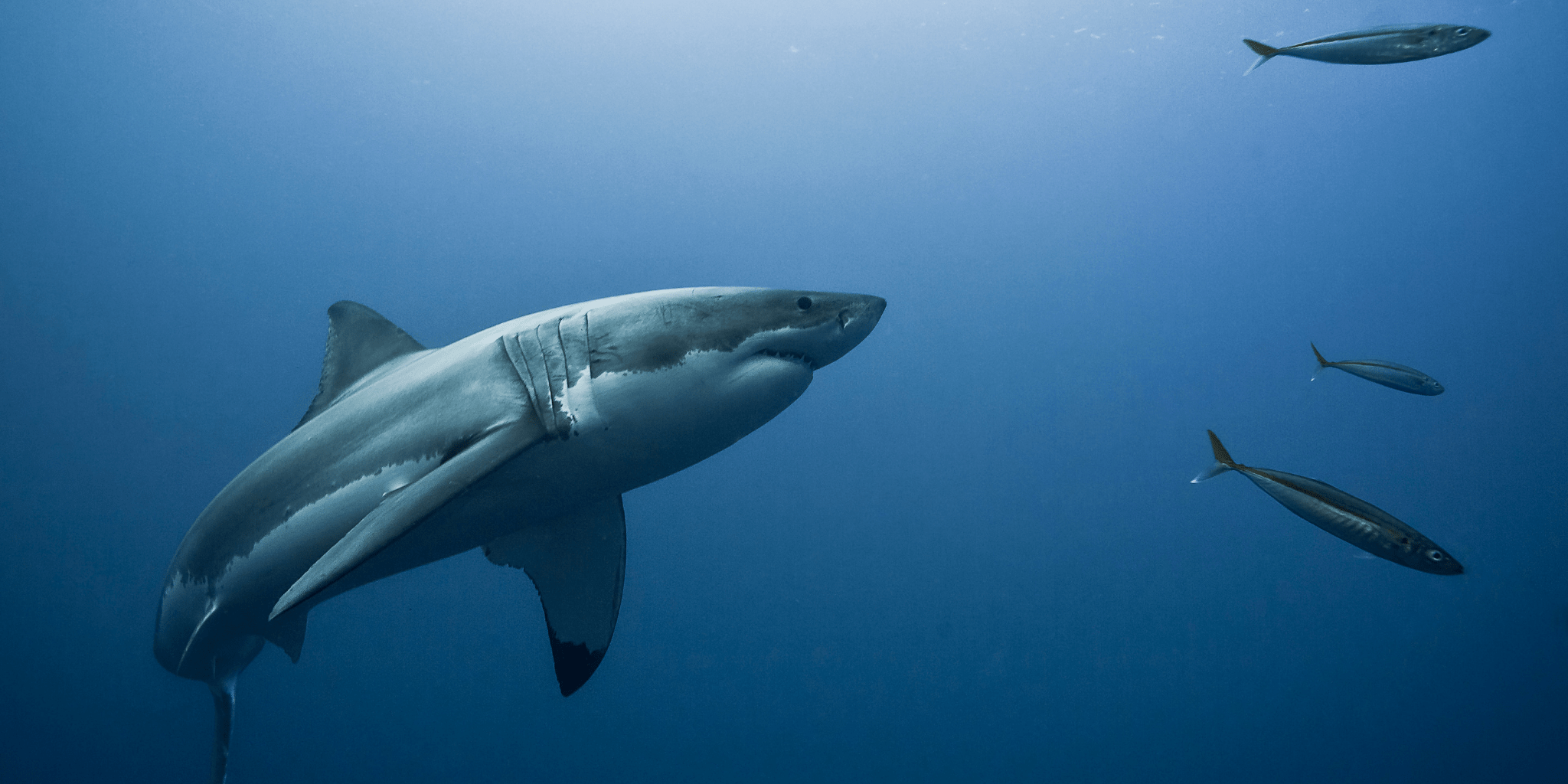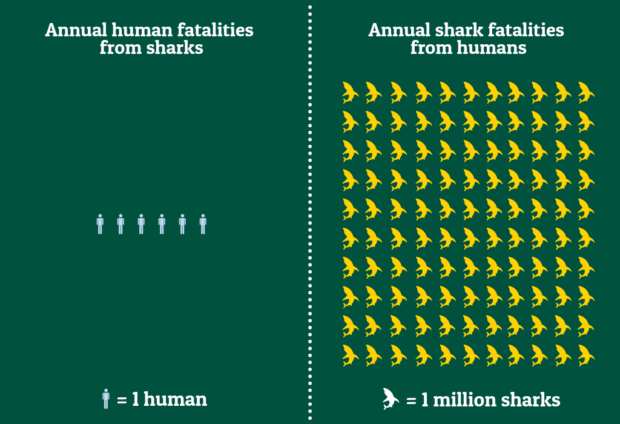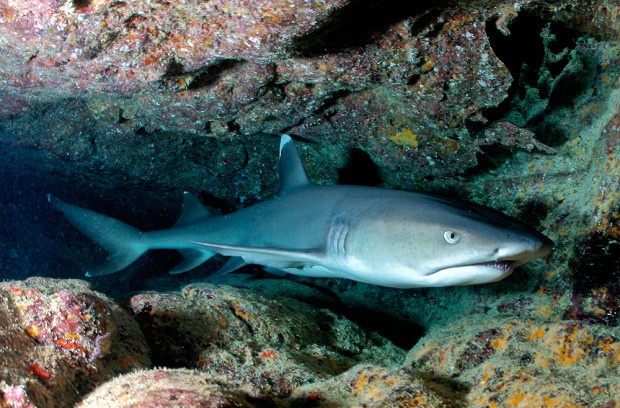We have much more to do and your continued support is needed now more than ever.
Not So Scary After All: Shark Facts You Might Not Know

Sharks may look scary with their many teeth and pointed finsーmuch of the human panic around sharks stems from the fear that the film Jaws originally stoked decades ago. But there’s so much more to these incredible wild animals than their sharp teeth!
While Jaws cemented the great white as the most well known shark species, there are hundreds of shark species in a mindblowing diversity of sizes, shapes and behaviors, and most of what you think you know about sharks isn’t quite true. Sharksーincluding white sharksーdon’t actively hunt humans, but we humans are decimating shark populations across the planet. Sharks are cool, and they need our help now more than ever. Read on to discover just how cool, and how you can help.
Greater than Great Whites
Shark-fueled disaster movies like Jaws and Sharknado have popularized the great white shark as the king of the seas, but the white shark is just one of more than 500 species of shark in the world’s oceansーand counting!
New species are still being discovered and described by science, like the recent discovery of the American pocket shark in the Gulf of Mexico. The tiny new species wasn’t named for its pocketable size, but rather for the pockets on either side of its body that excrete a glowing liquid to attract its prey.
If that photo doesn’t look like what you’d typically imagine a “shark” to look like, then the next photos may be even more surprising.
Sharks are elasmobranchs, a taxonomic group that also includes skates and rays. The visual similarities between sharks and their flatter cousins becomes apparent in species like the wobbegong shark:
…or the Argentine Angelshark:
Some sharks, like the sawshark, look less like rays and more like swordfish:
They also vary greatly in size. While the sawshark grows to only around 5ft in length, the basking shark can grow up to 30 feet in lengthーthat’s as long as a school bus! And the whale shark, the largest fish in the sea, can be even largerーup to 40 feet long:
Sharks have a lot of unique adaptations. One defining feature is their skeleton, which is made up of cartilage rather than bone. Another is their teeth; sharks shed and grow new ones throughout their lifetimes. Unlike bony fish, they don’t have swim bladders for buoyancy, which allows sharks to move up and down through different depths in the water column without worrying about changes in pressure.
The positioning of their pectoral fins, which cannot bend upward like those of bony fish, means that they can only swim forwards. Many (but not all) shark species have to keep moving in order to keep water flowing over their gills so they can breathe.
Sharks reproduce via internal fertilization just like mammals, unlike most fish with eject eggs and sperm into the water for external fertilization. Some sharks lay eggs while others give birth to live pups!
Test your knowledge – take our shark facts quiz!
Take the quiz!
Fish are Friends! Including Sharks!
While sharks have been demonized in pop culture due to their size, scary-looking teeth, and natural predatory behavior, deadly human-shark interactions disproportionately happen in fiction compared to their frequency in real life.
Sharks generally avoid humans and only interact out of curiosity, in defense when we threaten them or invade their territory, or if they confuse humans for their normal prey, which varies from fish to marine mammals to seabirds, depending on the species. But no matter the reason, shark interactions with humans are extremely rare occurrences.
Shark bite fatalities, while terrifying fuel for the imagination, only occur about six times per year. That’s in comparison to the 100 million sharks that are killed by humans every year!

As predators, sharks are critically important to maintaining healthy marine ecosystems. Predators keep populations of prey species strong by feeding on the weak and the sick, and they keep prey populations in check which maintains a healthy balance. Many sharks are important prey for other wildlife from marine mammals, seabirds, and other fish (including other sharks). Healthy oceans directly benefit humans.
Climate Change, Overfishing, and Other Threats to Sharks
Sadly, many species of shark in American waters are endangered or threatened due to human activities. Overfishing threatens shark populations both by directly catching sharks and by depleting their food sources. Shark fin harvesting in particular threatens shark populations worldwide – it’s estimated 73 million sharks are killed globally each year for their fins. And as climate change and ocean acidification from human activities threaten coral populations throughout the world’s oceans, tropical sharks may lose critical food sources.
As global temperatures increase due to human activities like burning fossil fuels and deforestation, climate change is having already having a significant impact on the world’s oceans. Over 90 percent of the global warming that has happened over the past fifty years has occurred in the ocean. And as temperatures are rising, the acidity of the ocean is increasing from excess carbon dioxide, while the amount of dissolved oxygen is decreasing. In some areas, climate change is even changing the salinity levels of the water. While it is challenging to predict exactly how these impacts will affect highly mobile species like sharks, they will certainly impact the ecosystems many shark species depend on. For example, as ocean acidification threatens coral reefs throughout the world’s oceans, tropical sharks may lose critical food sources. Additionally, as warmer waters change global circulation patterns, sharks’ geographical ranges may change, exposing them to new threats.
TAKE ACTION – Tell your governor and members of Congress: Climate Action Now!
Take Action!

Many shark conservation efforts are underway in the U.S., as coastal states have developed wildlife action plans listing many sharks as species of greatest concern. The basking shark, whale shark, great white shark, and many others are high priority species for coastal states.
Still can’t shake your fear of sharks? If you are headed to the beach and worried about potentially interacting with marine lifeーalthough you’re much more likely to be harmed in a car accident driving to the beach than by a shark when you go swimmingーyou can minimize the tiny, tiny risk from sharks by keeping out of the water if you have a cut or are bleeding, and by not going swimming alone or at dawn, dusk or nighttime when many shark species are active. (No, dolphins are not going to protect you from sharks–in fact seeing dolphins could mean that sharks could be nearby as these two predators often hunt the same prey.)
So, whether you’re a Shark Week buff or a SharkFest follower, just remember: sharks are important ocean creatures, not human-hunting monstersーand they need our help!
Like what you read? Please consider making a donation to support our critical conservation work:





















